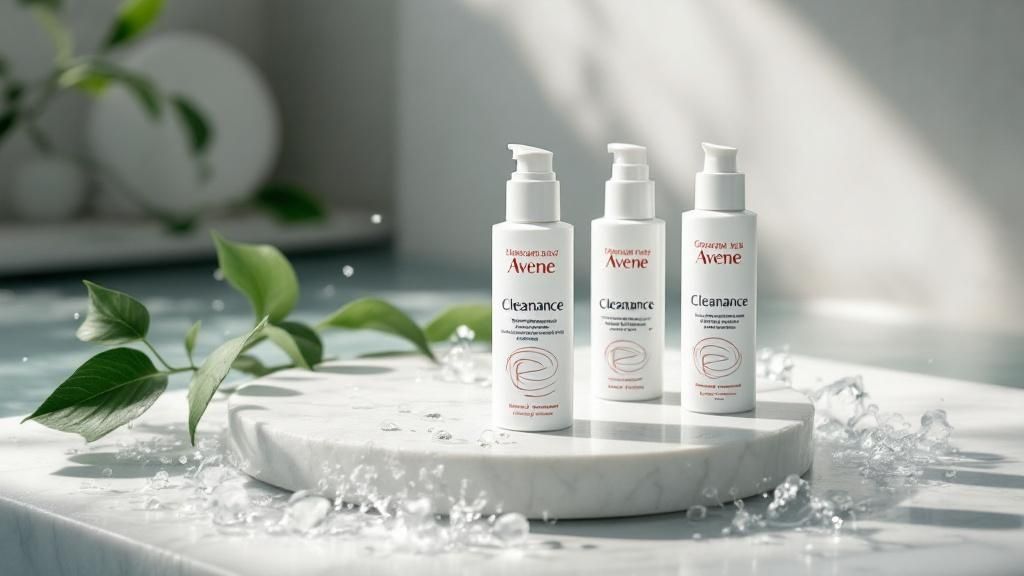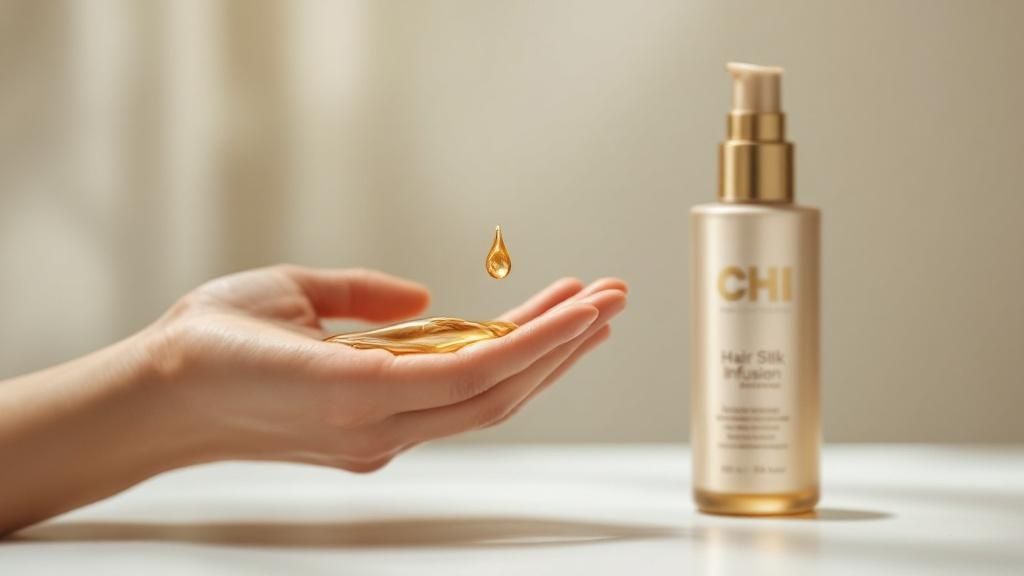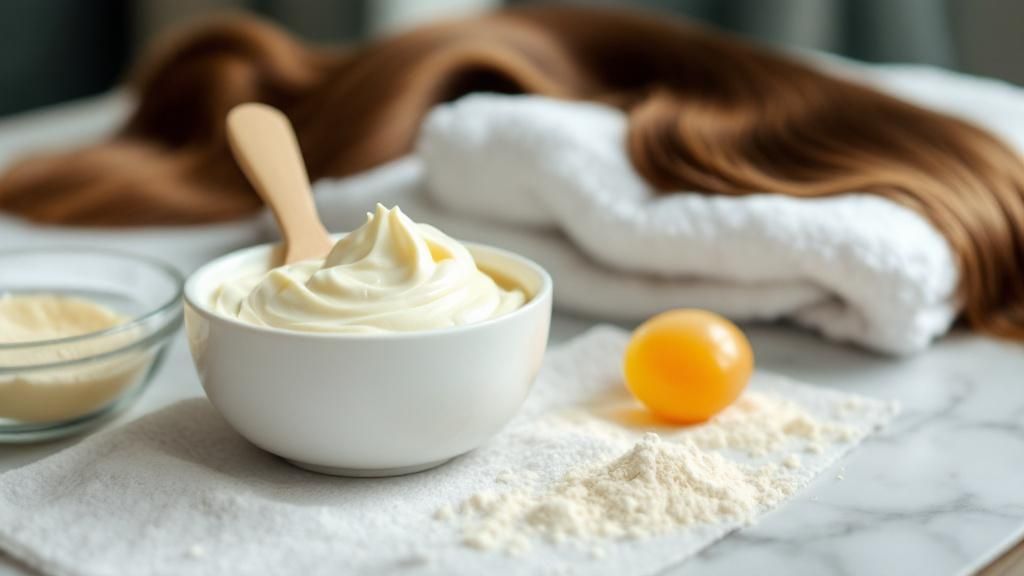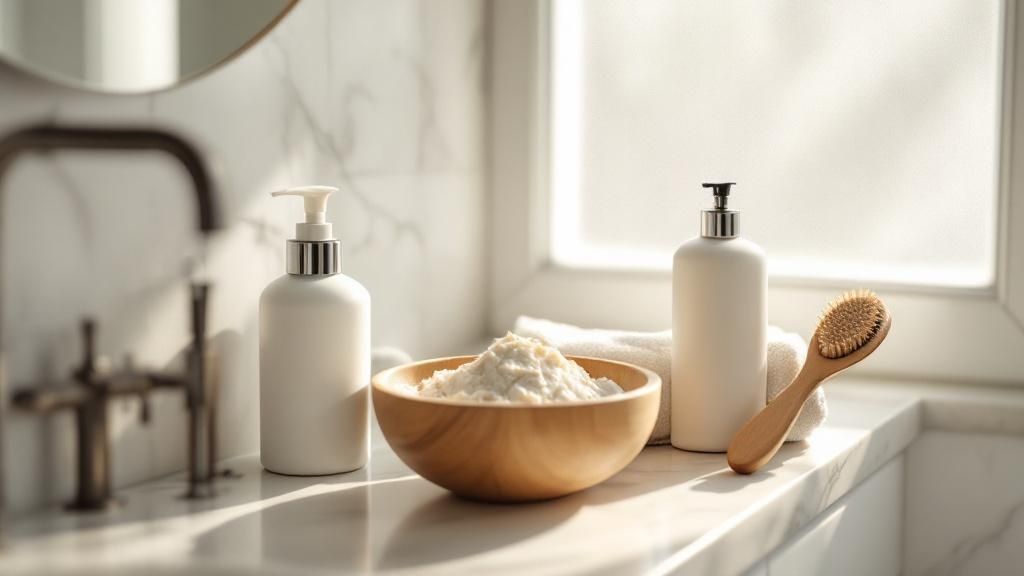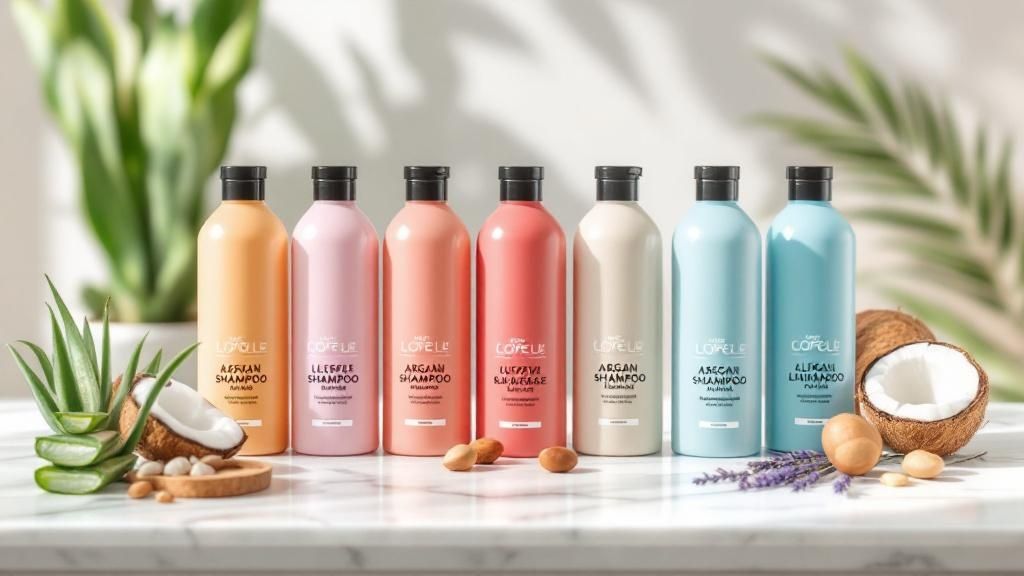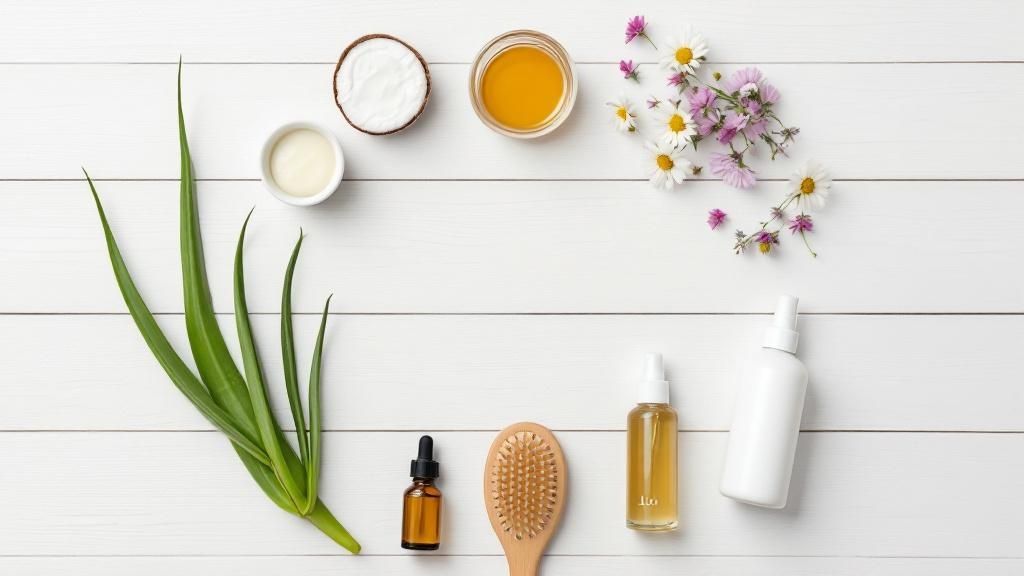
7 Proven Dry Scalp Remedies to Try in 2025
A dry, itchy scalp is more than just an annoyance; it's a signal that your scalp's delicate ecosystem is out of balance. While often confused with dandruff, which is typically caused by an overgrowth of yeast on an oily scalp, a truly dry scalp lacks sufficient moisture. This leads to uncomfortable tightness, small white flakes, and persistent irritation that can disrupt your day.
The causes are varied and can include environmental factors like the dry, arid climate of regions like Egypt, frequent exposure to air conditioning, or harsh haircare products that strip away your scalp's natural protective oils. Even hard water can contribute to the problem by leaving mineral deposits that block moisture absorption. Ignoring the signs can lead to increased sensitivity and even impact your hair's overall health and appearance.
Finding lasting relief requires moving beyond temporary fixes and adopting a more holistic approach. This is where this guide comes in. We will provide a complete collection of the most effective dry scalp remedies, designed to restore balance and provide deep, soothing hydration. We will explore:
- Potent Natural Treatments: Simple yet powerful home remedies you can implement immediately.
- Essential Lifestyle Adjustments: Small changes to your routine and environment that make a significant difference.
- Targeted Product Recommendations: How choosing the right haircare, like gentle, nourishing options from lo.la, can prevent dryness from recurring.
Our goal is to equip you with specific, actionable strategies to soothe irritation, eliminate flaking, and maintain a healthy, comfortable scalp for good. Let's delve into the solutions that will help you say goodbye to dryness and hello to lasting comfort.
1. Coconut Oil Treatment
For centuries, from ancient Ayurvedic practices to modern beauty influencers, coconut oil has been celebrated as one of the most effective and accessible dry scalp remedies. Its power lies in its unique composition. Rich in medium-chain fatty acids, particularly lauric acid, coconut oil can penetrate the hair shaft and scalp more deeply than many other oils. This provides profound hydration right where it’s needed, soothing the tightness and itchiness associated with dryness.
Furthermore, coconut oil's benefits extend beyond simple moisturisation. It possesses natural antimicrobial and antifungal properties, which can help address minor imbalances on the scalp that might be contributing to flakiness. By creating a protective lipid barrier, it also locks in existing moisture and shields the scalp from environmental aggressors, preventing the cycle of dryness from recurring.

How to Implement a Coconut Oil Scalp Treatment
To maximise its benefits, applying coconut oil correctly is key. This simple weekly ritual can transform a dry, irritated scalp into a balanced and hydrated one.
- Preparation: Start with virgin, unrefined coconut oil. Scoop a small amount (about a tablespoon) into your hands and warm it by rubbing your palms together until it melts into a clear liquid. This enhances absorption.
- Application: For best results, apply to a slightly damp scalp. The water helps distribute the oil more evenly. Part your hair into sections and use your fingertips to gently massage the warm oil directly onto your scalp in circular motions. This not only ensures full coverage but also stimulates blood flow.
- Duration: Let the treatment sit for at least 30 minutes to allow the fatty acids to penetrate deeply. For an intensive overnight treatment, cover your hair with a shower cap or an old towel to protect your pillow.
- Removal: Rinsing the oil out thoroughly is crucial to avoid greasy residue. Use a clarifying shampoo, potentially lathering up twice, focusing on the scalp to break down and wash away all the oil. Follow with your regular conditioner on the lengths of your hair.
This method is particularly beneficial for those experiencing seasonal dryness or flaking without signs of a more serious condition like dandruff or seborrheic dermatitis. It serves as an excellent preventative measure and a foundational step in any natural haircare routine. Incorporating this treatment into your regimen can offer a similar nourishing experience to a professional service. You can discover more techniques for achieving salon-quality results by reading about an at-home deep conditioning treatment.
2. Tea Tree Oil Diluted Treatment
Hailing from Australia, where its leaves were traditionally used by Aboriginal communities to treat skin ailments, tea tree oil has earned global recognition as a potent natural antiseptic. Its inclusion in a list of dry scalp remedies is well-deserved, thanks to its powerful antifungal, antibacterial, and anti-inflammatory properties. Unlike purely moisturising oils, tea tree oil actively addresses underlying issues like mild fungal growth or inflammation that can masquerade as simple dryness, leading to persistent itching and flaking.
This essential oil works by combating the microorganisms that can disrupt the scalp's natural balance. Its active compound, terpinen-4-ol, is highly effective at clearing out pores and follicles, helping to regulate sebum production and reduce irritation. This therapeutic action makes it a particularly effective remedy when dryness is accompanied by dandruff-like symptoms or a perpetually itchy feeling that hydration alone doesn't seem to solve.
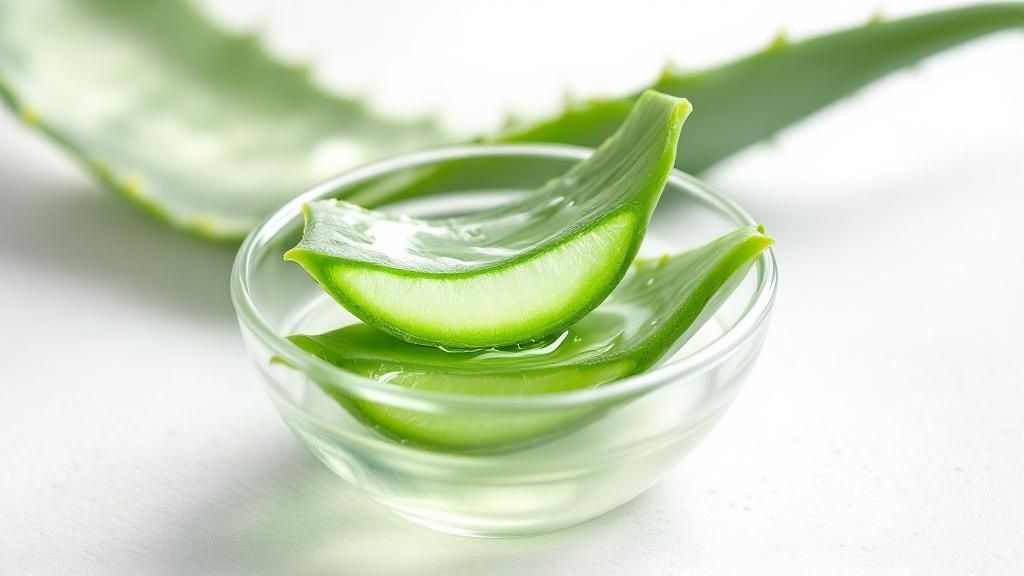
How to Implement a Tea Tree Oil Scalp Treatment
Tea tree oil is incredibly potent and must always be diluted to avoid causing irritation or over-drying the scalp. Following this controlled approach allows you to harness its benefits safely and effectively.
- Preparation: The key is proper dilution. Mix 5-10 drops of pure tea tree oil with one tablespoon of a carrier oil, such as jojoba, almond, or coconut oil. The carrier oil not only makes the tea tree oil safe for application but also adds its own moisturising benefits.
- Application: Before your first full application, always perform a patch test on a small area of skin (like behind your ear) to check for any sensitivity. Once cleared, part your hair and use your fingertips or a cotton ball to apply the diluted mixture directly to your scalp, focusing on particularly itchy or flaky areas.
- Duration: Allow the treatment to sit on your scalp for 20-30 minutes. This provides enough time for the oil to penetrate and act without being overly potent. Avoid leaving pure tea tree oil mixtures on overnight.
- Removal: Wash your hair thoroughly with a gentle shampoo to remove all traces of the oil mixture. You may need to shampoo twice. Follow with a conditioner on the lengths of your hair to restore moisture. Limit this treatment to a maximum of 2-3 times per week to prevent potential dryness.
This targeted treatment is ideal for individuals whose dry scalp is linked to minor microbial imbalances, such as those that cause dandruff. Clinical studies have shown significant improvements in dandruff symptoms with regular use. The popularisation of this remedy by brands like Paul Mitchell with their Tea Tree line underscores its efficacy and mainstream acceptance in professional hair care.
3. Aloe Vera Gel Application
Known as the "plant of immortality" by ancient Egyptians, aloe vera has a long-standing reputation as a potent natural healer. Today, it stands out as one of the most soothing and effective dry scalp remedies available. Its power is rooted in its gel-like substance, which is a rich reservoir of polysaccharides, amino acids, vitamins, and minerals. This nutrient-dense composition provides intense hydration to parched skin, directly addressing the core issue of a dry scalp.
Beyond its moisturising capabilities, aloe vera is highly prized for its profound anti-inflammatory and cooling properties. These attributes offer immediate relief from the persistent itchiness and irritation that often accompany dryness. Its enzymes also help to gently exfoliate dead skin cells, reducing flakiness without causing further irritation. This makes it a go-to recommendation by dermatologists, particularly for conditions like seborrheic dermatitis and scalp psoriasis, where both inflammation and flaking are present.
How to Implement an Aloe Vera Scalp Treatment
Incorporating an aloe vera gel treatment into your routine is a simple way to restore scalp comfort and balance. A weekly application can significantly reduce dryness and calm irritation.
- Preparation: Begin with pure aloe vera gel. Ensure the product you choose is free from added alcohols or artificial fragrances, as these can negate the benefits and potentially worsen dryness. You can use gel directly from a fresh aloe leaf or a high-quality store-bought version.
- Application: For optimal absorption, apply the gel to a clean, slightly damp scalp. Part your hair into several sections to ensure you can reach the skin directly. Using your fingertips, apply a generous amount of gel and massage it in gentle, circular motions across the entire scalp.
- Duration: Allow the gel to sit and work its magic for 20 to 30 minutes. Its lightweight texture will feel cooling and soothing. You don’t need to cover your hair unless you prefer to.
- Removal: Rinse the gel out thoroughly with lukewarm water. Because aloe vera is water-based and not oily, it rinses out easily. You can follow up with a gentle, sulphate-free shampoo and your regular conditioner, focusing the conditioner on the ends of your hair to avoid weighing down the roots.
This treatment is exceptionally beneficial for anyone with a sensitive, itchy, or inflamed scalp. Its gentle nature makes it suitable for frequent use and it serves as a fantastic calming step after sun exposure or a colour treatment. By alleviating irritation and providing deep hydration, it helps to create a healthier environment for hair growth.
4. Apple Cider Vinegar Rinse
Long celebrated as a folk remedy and now championed by the natural haircare movement, an apple cider vinegar (ACV) rinse is one of the most effective dry scalp remedies for rebalancing your scalp's delicate ecosystem. The secret lies in its acetic acid content. A healthy scalp has a slightly acidic pH, but many haircare products are alkaline, which can strip natural oils and lead to dryness and irritation. ACV helps restore this optimal pH balance, creating an environment where the scalp can thrive.
Beyond its pH-balancing act, ACV acts as a natural clarifier and gentle exfoliant. It effectively breaks down and removes the stubborn product buildup and hard water minerals that can clog hair follicles and contribute to flakiness. Its inherent antimicrobial properties also help to manage the growth of bacteria and yeast on the scalp, addressing one of the root causes of itchiness and minor irritation. This dual-action approach clarifies and soothes, making it a powerful tool against a dry, flaky scalp.
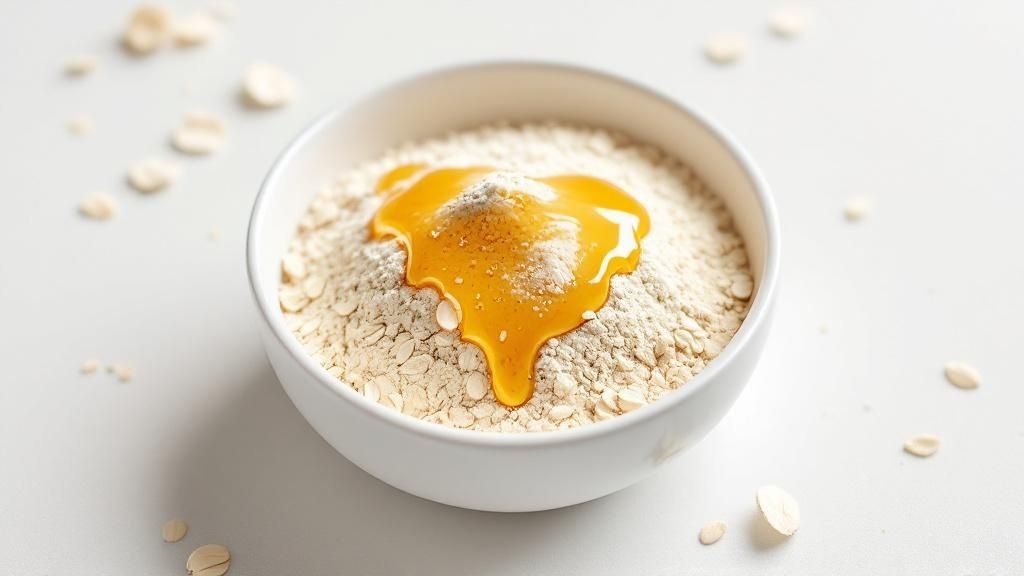
How to Implement an Apple Cider Vinegar Rinse
Integrating an ACV rinse into your routine is a simple yet transformative step. Following the correct dilution and application method is crucial to reap its benefits without causing irritation.
- Preparation: Always start by diluting the ACV to avoid over-acidifying your scalp. A good starting ratio is one to two tablespoons of raw, unfiltered apple cider vinegar mixed into one cup (around 240ml) of cool water. Pouring this mixture into a spray bottle or applicator bottle can make application much easier.
- Application: After shampooing and thoroughly rinsing your hair, apply the diluted ACV mixture. Focus on saturating the scalp, parting your hair in sections to ensure even coverage. Gently massage it into the scalp with your fingertips for a minute to stimulate circulation.
- Duration: Allow the rinse to sit on your scalp and hair for two to three minutes. This gives the acetic acid enough time to work its magic on product buildup and restore the pH level.
- Removal: Rinse the mixture out completely with cool water. The cool temperature helps to seal the hair cuticle, which enhances shine and locks in moisture. There is no need to follow with a conditioner, as the ACV rinse leaves hair feeling surprisingly soft and detangled.
This treatment is ideal for individuals with scalp buildup, mild flakiness, or itchiness, and it's a cornerstone practice for many in the 'no-poo' and low-poo haircare communities. Using this rinse once a week is typically sufficient to maintain a healthy scalp balance. It serves as an excellent clarifying treatment to reset your scalp and enhance the effectiveness of your other haircare products.
5. Oatmeal Scalp Mask
Beyond the breakfast bowl, oatmeal has earned its place as a gentle yet powerful hero in skincare and one of the most soothing dry scalp remedies. Its effectiveness stems from a rich profile of natural compounds. Colloidal oatmeal contains beta-glucan, a humectant that draws moisture into the skin, and avenanthramides, potent anti-inflammatory agents that calm the redness and itching synonymous with a dry, irritated scalp.
Furthermore, oatmeal acts as a mild cleanser. It contains natural saponins that gently absorb excess oil, dirt, and product buildup without stripping the scalp of its essential moisture. This dual-action approach of moisturising while cleansing makes it an ideal solution for those with sensitive skin who find conventional treatments too harsh. By forming a protective, hydrating film, an oatmeal mask restores comfort and helps rebalance the scalp's delicate ecosystem.
How to Implement an Oatmeal Scalp Mask
Harnessing the benefits of oatmeal is simple with a DIY mask. This calming treatment can be applied weekly or whenever your scalp feels particularly tight, itchy, or flaky.
- Preparation: Start with plain, uncooked rolled oats. Grind about half a cup of oats into a fine, consistent powder using a coffee grinder or blender. This ensures the mask is smooth and easy to rinse out.
- Application: In a bowl, mix the ground oatmeal with enough warm water or milk to form a smooth, spreadable paste. For added benefits, consider adding a tablespoon of honey for its antibacterial properties. Apply the paste directly onto a damp scalp, parting your hair in sections to ensure even coverage.
- Duration: Gently massage the mask into your scalp for a minute or two to help soothe irritation and provide light exfoliation. Let it sit for 20-30 minutes to allow the active compounds to work their magic. You can wear a shower cap to prevent it from drying out.
- Removal: Rinsing is the most important step. In the shower, thoroughly wet your hair and gently massage your scalp to loosen the mask. Rinse completely with lukewarm water until the water runs clear. Follow up with your regular shampoo and conditioner as needed.
This remedy is particularly effective for individuals with sensitive scalps or those prone to eczema-like irritation. The gentle exfoliation can help lift away flakes without causing further distress. For those who enjoy the benefits of physical exfoliation, you can explore other options by reading about a scalp scrub for dandruff.
6. Gentle Sulfate-Free Shampoo Switch
One of the most impactful changes you can make in your routine is a Gentle Sulfate-Free Shampoo Switch. Traditional shampoos often rely on harsh surfactants like sodium lauryl sulfate (SLS) or sodium laureth sulfate (SLES). While effective at creating a rich lather and removing dirt, these powerful detergents can be too aggressive for a sensitive scalp, stripping it of the natural oils essential for maintaining hydration and balance. This often leads to the very dryness, tightness, and irritation you're trying to combat.
Sulfate-free shampoos offer a gentler yet effective alternative. They use milder cleansing agents, such as coco-glucoside or sodium cocoyl isethionate, which clean the hair and scalp without disrupting the delicate moisture barrier. This approach helps maintain the scalp's natural equilibrium, making it one of the most fundamental dry scalp remedies for long-term health. The widespread adoption of these formulas by brands like SheaMoisture and the Curly Girl Method community highlights their success in promoting a healthier scalp environment.
How to Implement a Gentle Sulfate-Free Shampoo Switch
Making the switch is simple, but a few key considerations can ensure a smooth transition and maximise the benefits for your dry scalp.
- Ingredient Check: When selecting a product, look for gentle, plant-derived cleansers on the label. Ingredients like sodium cocoyl isethionate, decyl glucoside, and cocamidopropyl betaine are excellent indicators of a milder formula. Avoid products that list SLS or SLES high in the ingredients list.
- Washing Technique: Sulfate-free shampoos produce less lather, which can take some getting used to. You may find a double-cleanse method works best. Apply a small amount of shampoo and work it into the scalp for the first wash, then rinse and repeat with a second, smaller amount to ensure a thorough clean.
- Adjustment Period: Your scalp may need two to four weeks to adjust. During this time, oil production will begin to rebalance. Be patient as your scalp gets used to not being stripped of its natural oils daily. You might also consider using a clarifying treatment once a month to remove any potential buildup.
- Focus on the Scalp: Regardless of the shampoo, always focus the product on your scalp where the oil and buildup are concentrated. Gently massage it in with your fingertips, and let the suds run down the lengths of your hair as you rinse.
This strategic switch is more than just a trend; it's a foundational step towards resolving chronic scalp dryness by addressing a common root cause. By choosing a gentler cleansing agent, you support your scalp's ability to self-regulate and stay naturally moisturised. To explore your options further, you can discover more about the benefits of sulphate-free shampoos.
7. Humidifier and Environmental Adjustments
While topical treatments are essential, some of the most effective dry scalp remedies address the root cause: the environment itself. Your surroundings, particularly the air in your home and workplace, can significantly impact your skin's moisture levels. Using a humidifier and making other environmental adjustments is a systematic approach that prevents moisture from being leached from your scalp in the first place, supporting overall skin and hair hydration from the outside in.
This method works by increasing the ambient moisture in the air. When the air is dry, especially during winter months when central heating is on or in arid climates, it actively pulls moisture from any available source, including your skin and scalp. By maintaining optimal humidity levels, you create an equilibrium that allows your scalp to retain its natural moisture. This proactive strategy is often recommended by dermatologists and allergists, not just for dry scalp, but for overall skin health, proving its foundational importance in any hydration-focused routine.
How to Implement Environmental Adjustments for Scalp Health
Creating a scalp-friendly environment is a simple yet powerful step. Integrating a humidifier and being mindful of other drying factors can provide continuous, passive relief from dryness and irritation.
- Choose and Place Your Humidifier: Place a cool-mist humidifier in the room where you spend the most time, typically your bedroom, to work its magic overnight. This provides your scalp with 8+ hours of exposure to properly humidified air.
- Maintain Optimal Humidity: The goal is to maintain indoor humidity levels between 40% and 50%. Many modern humidifiers have a built-in hygrometer to monitor this, or you can purchase a separate inexpensive one to ensure you're in the right range.
- Keep it Clean: This is a crucial step. Clean your humidifier at least once a week according to the manufacturer's instructions. This prevents the growth of mould and bacteria, which you don't want circulating in your air or settling on your scalp.
- Adjust Your Shower Habits: In addition to a humidifier, avoid long, excessively hot showers. Hot water can strip the scalp of its natural protective oils, exacerbating dryness. Opt for lukewarm water instead.
This approach is highly effective for those whose dry scalp is seasonal or linked to their indoor environment. It's a preventative measure that complements all other topical treatments, creating the ideal conditions for them to work effectively. By managing your environment, you build a foundation of hydration that helps stop the cycle of dryness before it even starts.
7 Dry Scalp Remedies Comparison
| Treatment Method | 🔄 Implementation Complexity | ⚡ Resource Requirements | 📊 Expected Outcomes | 💡 Ideal Use Cases | ⭐ Key Advantages |
|---|---|---|---|---|---|
| Coconut Oil Treatment | Moderate (warming oil required) | Low (widely available, affordable) | Deep hydration, antimicrobial, long-lasting moisture | Dry, irritated scalp; conditioning hair strands | Natural, antimicrobial, anti-inflammatory, moisturizing |
| Tea Tree Oil Diluted Treatment | Moderate (dilution and patch test) | Low (small amounts needed) | Reduces dandruff, antifungal, soothes irritation | Scalp fungal issues, dandruff, oily scalp | Potent antimicrobial, regulates sebum, cooling effect |
| Aloe Vera Gel Application | Low (direct application) | Low (readily available gels) | Immediate cooling, hydration, inflammation reduction | Sensitive, itchy, irritated scalps | Gentle, non-greasy, moisturizing, daily use safe |
| Apple Cider Vinegar Rinse | Low (dilution and rinse) | Low (inexpensive, common kitchen item) | pH balance restoration, buildup removal | Product buildup, scalp odor, mild exfoliation | Clarifying, antimicrobial, shine-enhancing |
| Oatmeal Scalp Mask | Moderate (powder prep and rinse) | Low (common household ingredient) | Soothes inflammation, gentle cleansing, moisturizes | Sensitive, flaky scalp, mild irritation | Gentle exfoliation, anti-inflammatory, moisturizing |
| Gentle Sulfate-Free Shampoo Switch | Low (routine change) | Moderate (cost higher than regular shampoos) | Moisture retention, reduced irritation | Dry scalp, color-treated hair, daily cleansing | Mild, moisturizing, less irritating, color safe |
| Humidifier and Environmental Adjustments | Moderate (purchase and maintenance) | Moderate to high (humidifier cost) | Prevents dryness at source, improves overall hydration | Dry climates, winter, environmental dryness | Root cause approach, benefits skin and respiratory health |
Your Path to a Balanced, Healthy Scalp Starts Now
Navigating the world of dry scalp remedies can feel overwhelming, but as we have explored, achieving a calm, hydrated, and comfortable scalp is entirely within your reach. The journey from irritating dryness to lasting balance is not about finding a single magic bullet. Instead, it is about building a consistent, personalised routine that combines the wisdom of natural solutions with the targeted efficacy of modern haircare. You have now been equipped with a comprehensive toolkit to combat flakes, itching, and tightness for good.
The key takeaway is that treating a dry scalp requires a multifaceted approach. You cannot simply apply a single oil and expect a permanent fix if you continue to use a harsh, stripping shampoo or ignore environmental factors. True success lies in a holistic strategy that addresses the issue from multiple angles.
Summarising Your Path to Relief
Let's quickly recap the powerful strategies we have covered. We began with time-tested natural moisturisers, exploring how to properly implement a coconut oil pre-shampoo treatment to deeply nourish the skin barrier and how to safely use diluted tea tree oil to leverage its impressive antimicrobial and anti-inflammatory properties. We also highlighted the soothing, hydrating power of aloe vera gel as a direct scalp soother and the clarifying benefits of a correctly formulated apple cider vinegar rinse to rebalance pH and remove build-up.
Beyond direct treatments, we delved into crucial lifestyle and product adjustments:
- The Power of a Gentle Cleanse: Switching to a sulphate-free shampoo is arguably one of the most impactful changes you can make. This single step prevents the cycle of stripping natural oils, which is a primary cause of scalp dryness for many people.
- Embracing Your Environment: Recognising that dry air in your home or office, especially from air conditioning, can exacerbate scalp issues is a critical insight. Using a humidifier introduces moisture back into your environment, providing passive, continuous support for your skin and scalp.
- Soothing with Oatmeal: The humble oatmeal scalp mask offers a gentle, calming, and moisturising treatment perfect for even the most sensitive and irritated scalps, thanks to its avenanthramides content.
Creating Your Personalised Scalp Care Ritual
The true value of these dry scalp remedies is realised when you start to combine them into a routine that works for your specific needs and lifestyle. For instance, you might commit to a weekly coconut oil mask on the weekend, use an apple cider vinegar rinse every fortnight to clarify, and ensure your daily shampoo is always gentle and sulphate-free. During the dry winter months or in a heavily air-conditioned office, running a humidifier becomes a non-negotiable part of your defence.
Key Insight: Consistency is more important than intensity. A gentle, sustained routine will always outperform sporadic, aggressive treatments. Listen to your scalp; it will tell you what it needs. If itching increases, perhaps pull back on clarifying rinses. If it feels tight, it is time for a deep-moisturising mask.
Mastering this approach moves you from being a passive victim of scalp discomfort to an empowered manager of your own scalp health. This not only eliminates the physical symptoms of itching and flaking but also boosts your confidence. Healthy, well-cared-for hair begins at the root, and a balanced scalp is the foundation for hair that looks and feels its best, free from the distraction and embarrassment that flakes can cause. Your path to a revitalised scalp and, by extension, more vibrant hair, starts with the small, consistent steps you choose to take today.
Ready to elevate your routine with expertly formulated solutions? Explore the curated "Dry & Sensitive Scalp" collection at lo.la to discover gentle, sulphate-free shampoos, nourishing hair masks, and soothing treatments from top international brands. Find your perfect match and enjoy same-day delivery in New Cairo by shopping at lo.la.










